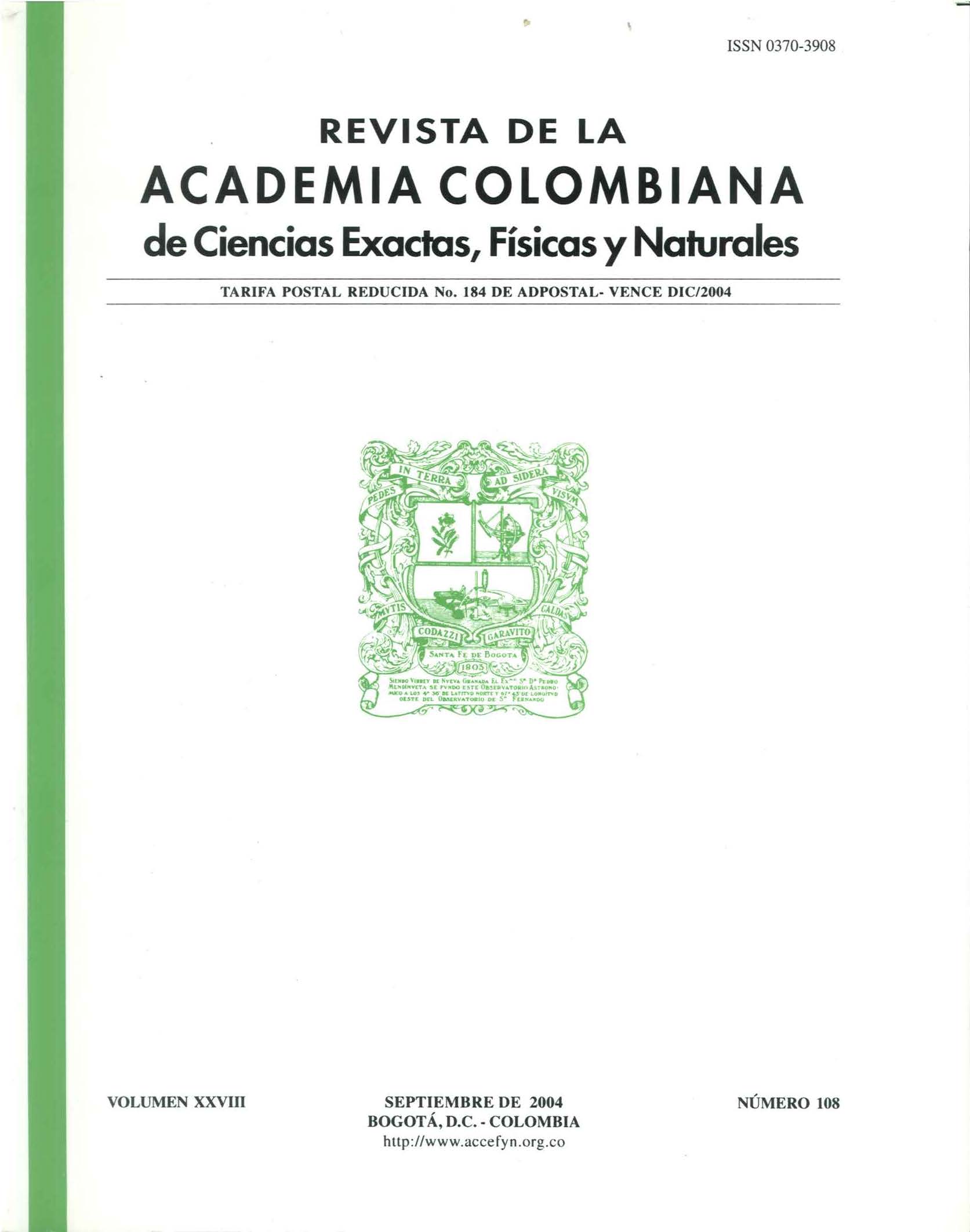Resumen
Se evalúa la actividad reproductiva de Hyla pugnax y se describe su desarrollo larval en las inmediaciones del Río Doradas, segundo desarrollo del complejo de represas Uribante-Caparo (7º 46´N; 82º 00´W), Estado Táchira, Venezuela. En el lugar se detectó la presencia de 159 nidos, algunos de forma circular, otros elípticos, colocados en su mayoría en sustratos arenosos en las márgenes de las quebradas. El área promedio de cada nido fue de 326,12 cm2. Los nidos eran simples en su edificación, compuestos de una sola cámara, donde se encontraban depositados los huevos. Sin embargo, la presencia de huevos en otros sitios con condiciones húmedas sugiere que esta especie es facultativa en la construcción de sus nidos. El número máximo de nidos (46) se registró en febrero, en plena época de sequía, disminuyendo en número a lo largo del año, en correspondencia con el comienzo de las primeras lluvias, indicando que se reproduce durante la estación seca. La cantidad de huevos depositados se encuentra en un intervalo de (1783-2050) con promedio de 1896, depositados en una masa gelatinosa transparente colocada en monocapa sobre la superficie del agua. El desarrollo larval de Hyla pugnax, desde el huevo hasta la metamorfosis completa, dura 95 días a una temperatura de 21ºC. Las larvas fueron preservadas en solución de 70% alcohol, 1% formalina y depositadas en la Colección de Vertebrados de la Universidad de Los Andes (CVULA), en Venezuela. El estatus taxonómico de Hyla pugnax ha sido objeto de controversias. Los aportes de este trabajo permiten ratificar su entidad específica.
Referencias
Altig, R. 1970. A key to the tadpoles of the Continental United States and Canada. Herpetologica, 26(2):180-207.
Ataroff, M. & L. Sarmiento. En prensa. Las unidades ecológicas de los Andes de Venezuela. En: La Marca, E. Y P. Soriano (eds.). Reptiles de Los Andes de Venezuela. Ed. MCTM, Mérida, Venezuela.
Barrio, C. L. 1998. Sistemática y Biogeografía de los Anfibios (Amphibia) de Venezuela. Acta Biol. Venez., 18 (2): 1-98.
Caldwell, J. P. 1992. Diversity of reproductive modes in anurans: facultative nest construction in gladiator frogs. P: 85-97. En: W. C. Hamlett (ed.) Reproductive biology of South American vertebrates. Springer-Verlag, New York.
Castillo, L. 1968. Cuenca Montañosa del Uribante. Convenio ULA CorpoAndes. P: 177.
Consorcio Estudios Hidroeléctricos. 1972. Aprovechamiento integral de los ríos Uribante y Caparo. Hidrología, Tomo 3. Estudio preliminar. CADAFE. P: 1-73+Anexos.
Consorcio Estudios Hidroeléctricos. 1976. Aprovechamiento integral de los ríos Uribante-Doradas, y Camburito-Caparo. Estudio de Factibilidad. Informe Final. CADAFE.
Donoso-Barros, R & J. León-Ochoa. 1972. Desarrollo y evolución larval de Hyla crepitans (Amphibia; Salientia). Bol. Soc. Biol. de Concepción, 44: 117-127.
Duellman W. E. 1970. The hylid frogs of Middle America. Monog. Mus. Nat. Hist. Univ. Kansas., 1:1-753.
Duellman W. E. 1970. Trueb 1986. The Biology of Amphibians. McGraw Hill, New York: P 670.
Goeldi, E. A. 1895. Contribution to the Knowledge of the breeding-habits of some tree frogs (Hylidae) of the Serra dos Orgaos, Río de Janeiro, Brazil. Proc. Zool. Soc. Lond. 1895: 89-97.
Gosner, K. L. 1960. A simplified table for staging anuran embryos and larvae with notes on identification. Herpetologica., 16:183-190.
Hoogmoed, M. S. 1990. Resurrection of Hyla wavrini Parker (Amphibia: Anura: Hylidae), a Gladiator frog from northern South America. Zool. Med. Leiden 64(6): 71-93, figs. 1-14.
Höbel, G. 1999. Facultative nest construction in the Gladiator Frog Hyla rosenbergi (Anura: Hylidae). Copeia, 1999(3): 797-801.
Höbel, 2000. Reproductive ecology of Hyla rosenbergi in Costa Rica. Herpetologica, 56(4): 446-454.
Kluge, A.G. 1979. The Gladiator Frogs of middle America and Colombia-a reevaluation of their systematics (Anura: Hylidae). Occasional papers of the Museum of Zoology University of Michigan. 688: 1-24.
Kluge, 1981. The life history, social organization and parental behavior of Hyla rosembergi boulenger, a nest-building Gladiator Frog. Miscellaneous Publications, Museum of Zoology, University of Michigan. 60: 1-170.
Myers, C.W. & W.E. Duellman. 1982. A new species of Hyla from Cerro Colorado, and other tree frog records and geographical notes from western Panama. American Museum Novitates 2752: 1–32.
La Marca, E. 1992.Catalogo taxonómico, biogeográfico y bibliográfico de las ranas de Venezuela. Cuadernos Geográficos U.L.A., Mérida (9): 197pp.
La Marca, 1996a. First record of Hyla pugnax (Amphibia: Anura: Hylidae) in Venezuela. Bull. Maryland Herp. Soc., 32 (2): 35-42.
Lutz, B. 1960a. Fighting and an incipient notion of territory in male tree frogs. Copeia 1960: 61-63.
Lutz, 1960b. Nacao de territorio em anfibios anuros Hyla faber wied. An. Acad. Bras. Cienc. 32:143-145.
Lutz, 1960c The clay nest of Hyla pardalis Spix. Ibid. 1960: 364-366.
Magnusson, W. E., A. P. Lima, J. M. Hero & M. Carmozina de Araújo. 1999. The rise and fall of a population of Hyla boans: reproduction in a Neotropical gladiator frog. Journal of Herpetology, 33(4): 647-656.
Martins, M. & G. Moreira. 1991. The nest and the tadpole of Hyla wavrini Parker (Amphibia, Anura). Mem.ins.butantan 53: 197-204.
Péfaur, J. E. 1986. Estudio de la Calidad de agua del Embalse Uribante. Convenio MRNR. CADAFE. Facultad de Ciencias ULA. P: 124 + Anexos.
Péfaur, & J. A. Rivero. 2000. Distribution, species-richness, endemism, and conservation of Venezuelan amphibians and reptiles. Amphibian and Reptile Conservation., 2(2): 42-70.
Sierra N. 1989. Estructura de la comunidad zooplantónica del Embalse Uribante, Táchira. Tesis de grado para optar por la Licenciatura de Biología. Universidad de Los Andes, Mérida, Venezuela. P: 163 + Anexos.
Wassersug, R. J. 1976. Oral Morphology of anuran larvae: Terminology and general description. Occ. Pap. Mus. Nat. Hist. Univ. Kansas., 48: 1-23.
Wassersug, 1980. Internal oral features of larvae from eight anuran families: functional, systematic, evolutionary and ecological considerations. University of Kansas Museum of Natural History. Miscellaneous Publication, 68: 1-143.
Yerena, E. 1994. Corredores Ecológicos en los Andes de Venezuela. Parque Nacionales y Conservación Ambiental N° 4, Editorial Torino, Caracas. P.XI + 186+ 1 mapa plegable: 12 figuras.

Esta obra está bajo una licencia internacional Creative Commons Atribución-NoComercial-SinDerivadas 4.0.
Derechos de autor 2023 https://creativecommons.org/licenses/by-nc-nd/4.0

